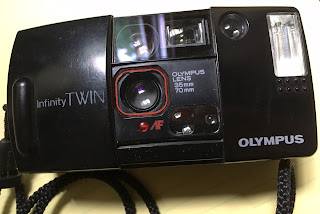Silver theft on Aisle 3
If you shoot film and have it processed at a drugstore, watch out. Walgreens and CVS are trying to steal your silver. By Eastwind41 (Own work) [Copyrighted free use], via Wikimedia Commons That's the only possible explanation as to why they no longer return your negatives when you develop color negative film. Instead of giving you prints with negatives in your photofinishing envelope, they give you prints and image files on a CD. You don't get your negatives back. By SkywalkerPL (Own work) [CC BY 3.0], via Wikimedia Commons Why? The film contains tiny particles of silver, which can be extracted and recycled, usually benefitting the photo lab. Companies used to offer kits that allowed labs to recover the silver, and you'd get your negatives back. But that technology likely isn't widely offered, since film processing declined. This page of Kodak's website talks about the process. The labs want to keep the silver. So you don't get your negatives ...


